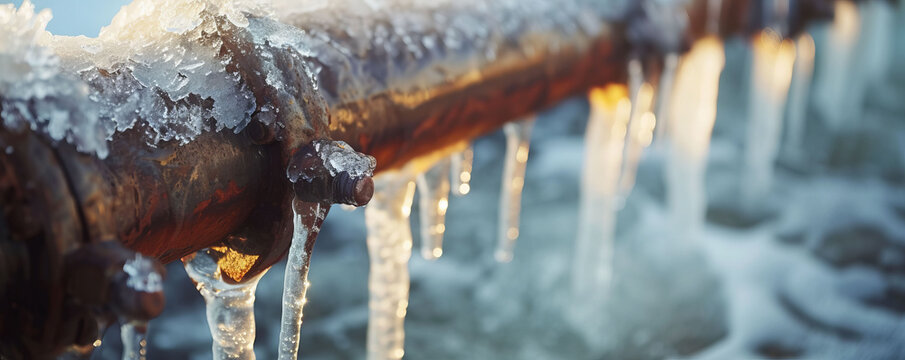Essential Tips to Prevent Frozen Plumbing in Winter
Essential Tips to Prevent Frozen Plumbing in Winter
Blog Article
We've unearthed this post involving Winter Plumbing Precautions: Preventing Frozen Pipes listed below on the net and reckoned it made good sense to write about it with you over here.

Winter can ruin your pipes, particularly by freezing pipelines. Right here's how to prevent it from taking place and what to do if it does.
Intro
As temperatures decline, the threat of icy pipes increases, possibly resulting in costly fixings and water damages. Recognizing just how to prevent icy pipes is critical for house owners in cold environments.
Recognizing Frozen Pipelines
What creates pipes to ice up?
Pipelines ice up when revealed to temperature levels listed below 32 ° F (0 ° C) for expanded periods. As water inside the pipes freezes, it expands, taxing the pipeline walls and potentially causing them to rupture.
Threats and problems
Frozen pipelines can result in water disturbances, building damages, and expensive repairs. Burst pipelines can flood homes and create comprehensive architectural damage.
Signs of Frozen Piping
Identifying icy pipes early can stop them from breaking.
How to determine icy pipelines
Search for decreased water flow from faucets, unusual odors or noises from pipes, and visible frost on exposed pipes.
Avoidance Tips
Insulating prone pipes
Cover pipelines in insulation sleeves or use warm tape to shield them from freezing temperature levels. Concentrate on pipes in unheated or outside areas of the home.
Heating techniques
Keep indoor spaces adequately heated, particularly locations with pipes. Open up cabinet doors to permit warm air to circulate around pipelines under sinks.
Safeguarding Outside Plumbing
Yard hoses and outside faucets
Disconnect and drain garden tubes before wintertime. Set up frost-proof spigots or cover outdoor taps with insulated caps.
What to Do If Your Pipelines Freeze
Immediate actions to take
If you suspect icy pipes, keep faucets available to eliminate pressure as the ice thaws. Utilize a hairdryer or towels soaked in warm water to thaw pipelines slowly.
Long-Term Solutions
Architectural modifications
Take into consideration rerouting pipelines away from exterior wall surfaces or unheated locations. Add extra insulation to attic rooms, basements, and crawl spaces.
Upgrading insulation
Invest in high-grade insulation for pipes, attics, and wall surfaces. Proper insulation assists keep constant temperature levels and reduces the danger of icy pipes.
Conclusion
Preventing icy pipelines calls for aggressive measures and fast reactions. By comprehending the reasons, signs, and preventive measures, house owners can secure their pipes throughout cold weather.
6 Proven Ways to Prevent Frozen Pipes and Protect Your Home
Disconnect and Drain Garden Hoses
Before winter arrives, start by disconnecting your garden hoses and draining any remaining water. Close the shut-off valves that supply outdoor hose bibs and leave the outdoor faucet open to allow any residual water to drain. For extra protection, consider using faucet covers throughout the colder months. It’s also important to drain water from any sprinkler supply lines following the manufacturer’s directions.
Insulate Exposed Pipes
Insulating your pipes is an effective way to prevent freezing. Pipe insulation is readily available at home improvement stores and is relatively inexpensive. Pay close attention to pipes in unheated areas such as the attic, basement, crawl spaces, or garage. Apply foam insulation generously to create a buffer against the cold. You can also wrap your pipes in heat tape or thermostat-controlled heat cables for added warmth.
Seal Air Leaks
Inspect your home for any cracks or openings that could let in cold air. Seal any holes around the piping in interior or exterior walls, as well as the sill plates where your home rests on its foundation. Additionally, make sure to keep your garage door closed unless you’re entering or exiting. Leaving it open creates a significant air leak that can lead to frozen pipes.
Allow Warm Air Circulation
During cold snaps, it’s essential to allow warm air to circulate evenly throughout your home. Leave interior doors ajar to promote better airflow. Open kitchen and bathroom cabinets to help distribute heat consistently around the rooms. If you have small children or pets, be sure to remove any household chemicals or potentially harmful cleaners from open cabinets for safety.
Let Faucets Drip
A small trickle of water can make a big difference in preventing ice formation inside your pipes. When temperatures drop significantly, start a drip of water from all faucets served by exposed pipes. This continuous flow helps prevent the water from freezing. Additionally, running a few faucets slightly can relieve pressure inside the pipes, reducing the chances of a rupture if the water inside does freeze.
https://choateshvac.com/6-proven-ways-to-prevent-frozen-pipes-and-protect-your-home/

Do you appreciate reading up on Helpful Tips to Prevent Frozen Pipes this Winter? Try leaving feedback directly below. We'd be delighted to know your views about this write up. Hoping to see you back again soon. Enjoyed our review? Please quickly share it. Help somebody else locate it. Many thanks for your time invested reading it.
Request Your Service Report this page